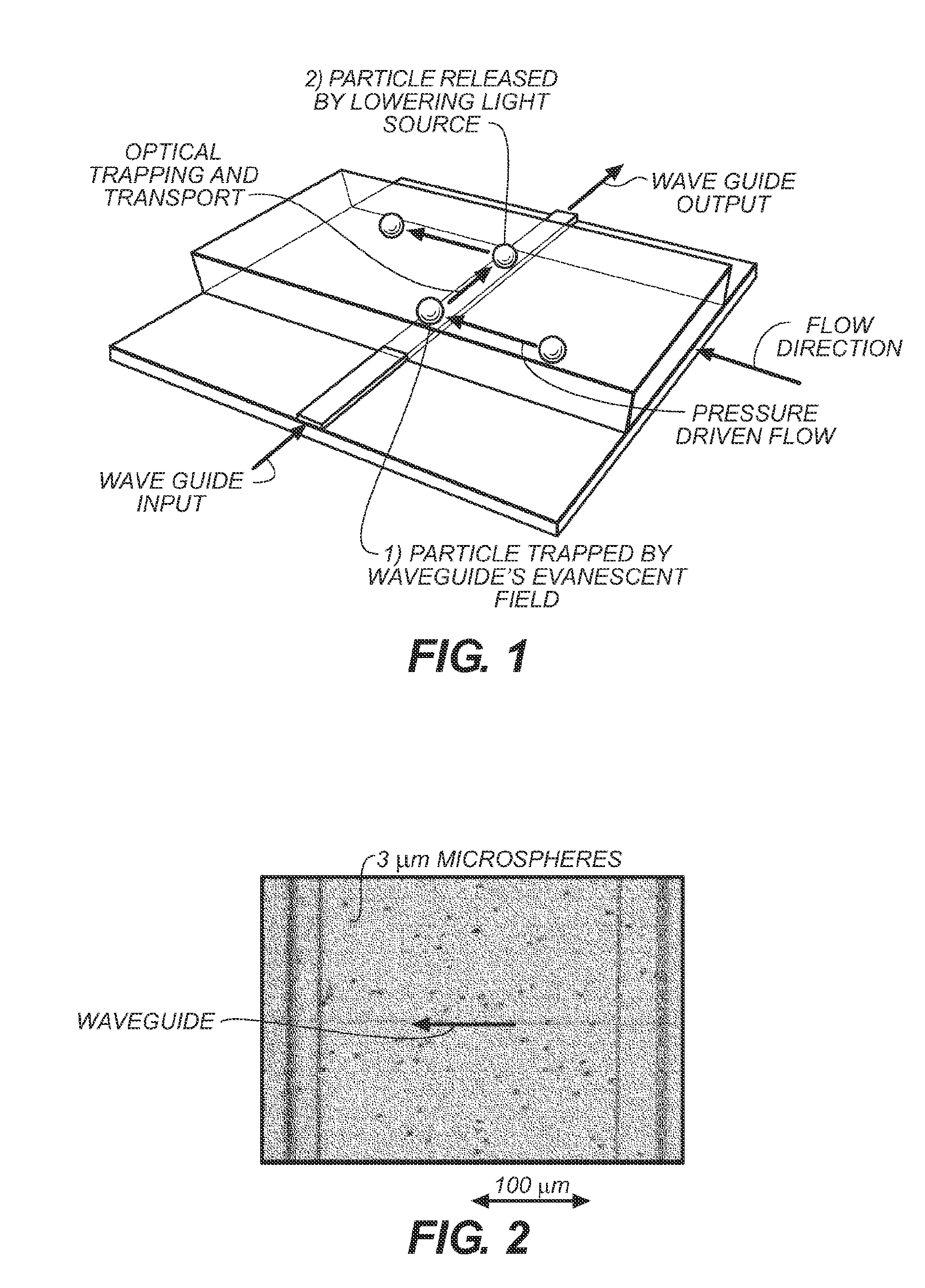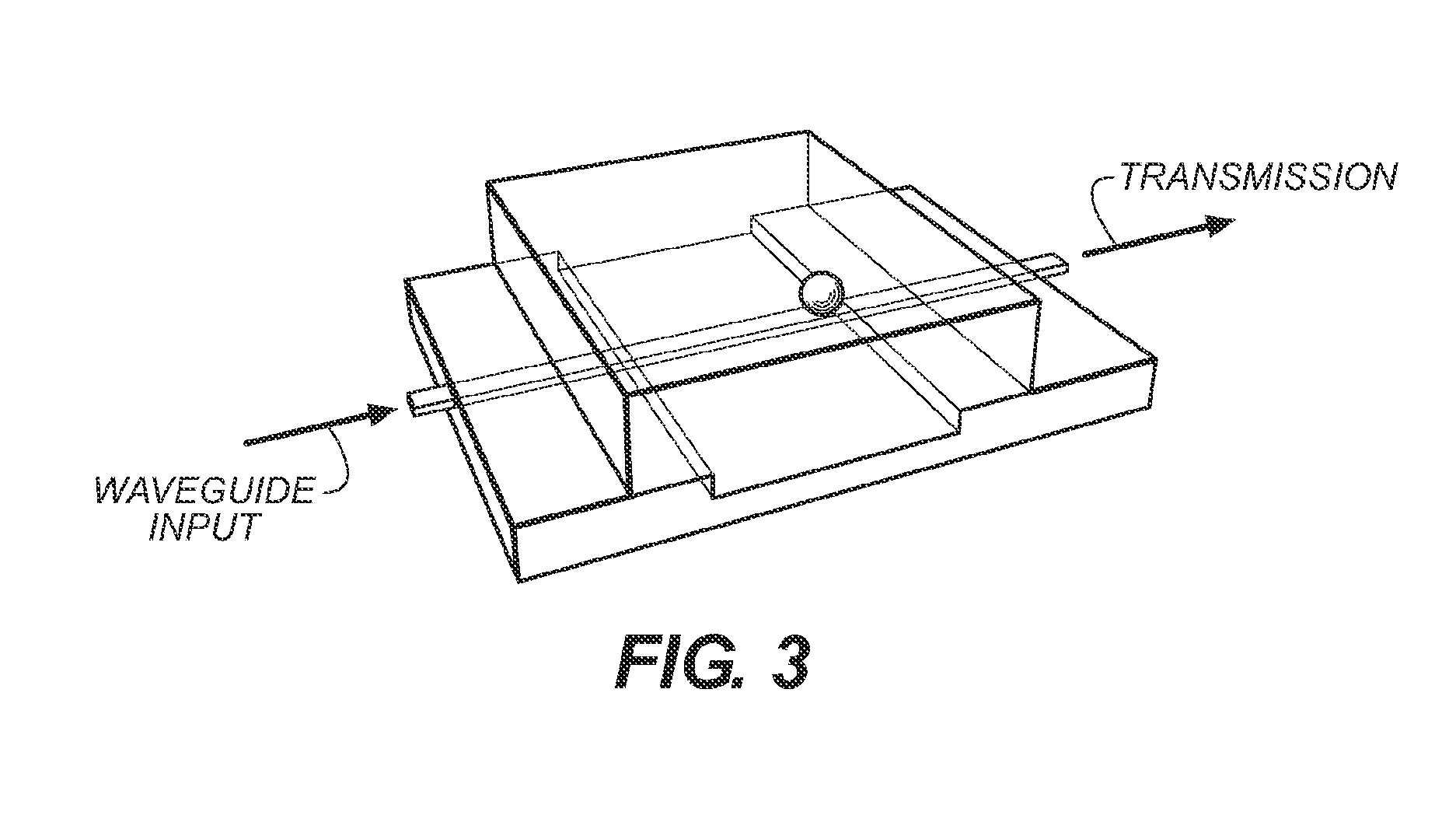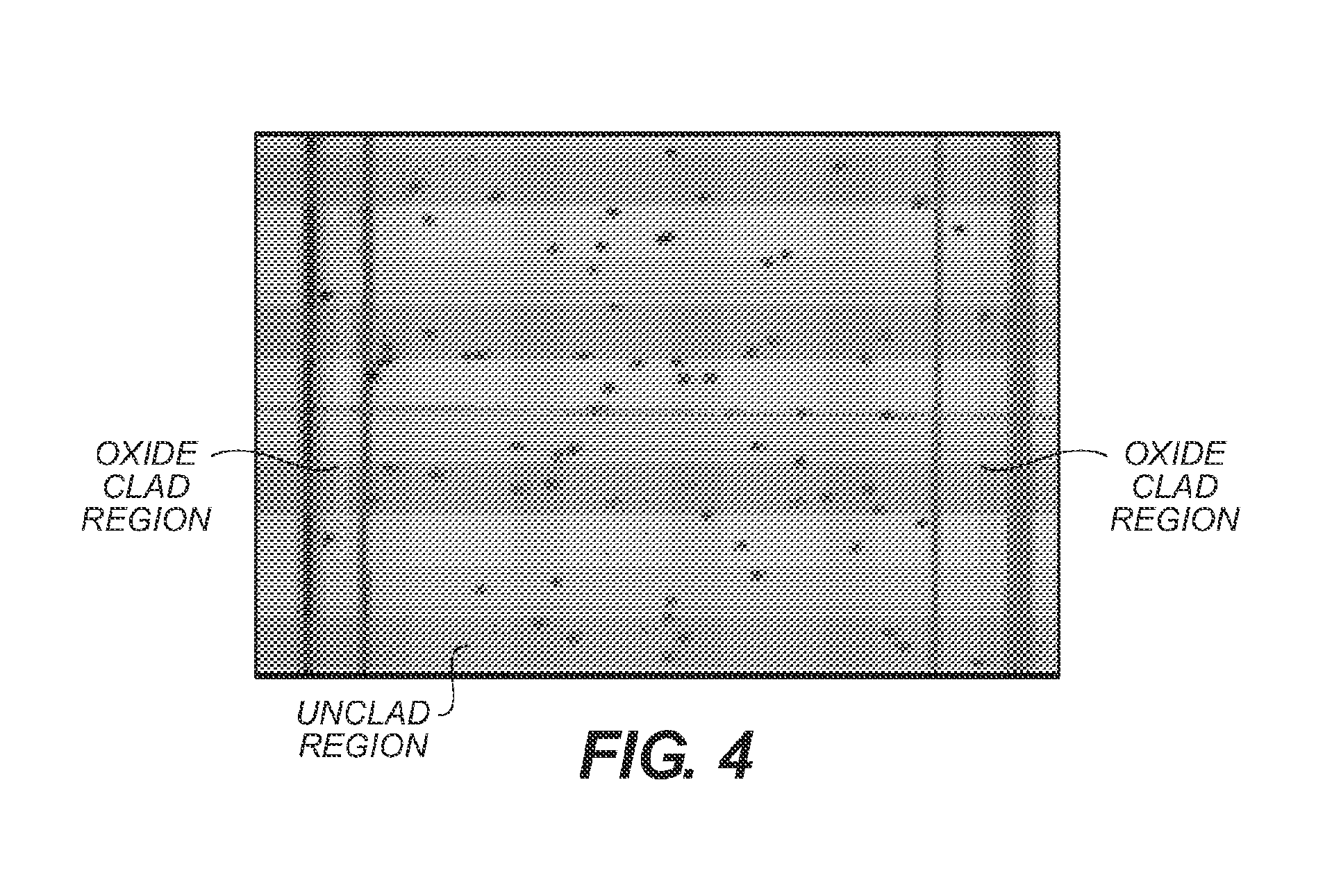Integrated optofluidic system using microspheres
a technology of optofluorescence and microspheres, applied in fluid controllers, laboratory glassware, instruments, etc., can solve the problem that the complete integrated system cannot be fabricated using standard photolithography techniques
- Summary
- Abstract
- Description
- Claims
- Application Information
AI Technical Summary
Benefits of technology
Problems solved by technology
Method used
Image
Examples
Embodiment Construction
[0096]For clarity of disclosure, and not by way of limitation, the detailed description of the invention is divided into the subsections set forth below.
[0097]5.1 Integrated Optofluidic System
[0098]An integrated optofluidic system for trapping and transporting particles for analysis is provided. In one embodiment, the optofluidic system comprises:[0099]a planar substrate;[0100]a microfluidic channel; and[0101]a waveguide, wherein the waveguide is integrated with the microfluidic channel
[0102]The integrated optofluidic system can be a stand-alone device or integrated into any suitable microfluidics platform known in the art. In certain embodiments, the integrated optofluidic system can form a component on a chip (e.g., a “lab-on-a-chip”) with other analysis capabilities. Particles and / or analytes that are analyzed by the integrated optofluidic system on the chip can be moved or pumped to other areas of the chip for further analysis or characterization.
[0103]The integrated optofluidic...
PUM
| Property | Measurement | Unit |
|---|---|---|
| width | aaaaa | aaaaa |
| height | aaaaa | aaaaa |
| diameter | aaaaa | aaaaa |
Abstract
Description
Claims
Application Information
 Login to View More
Login to View More - R&D
- Intellectual Property
- Life Sciences
- Materials
- Tech Scout
- Unparalleled Data Quality
- Higher Quality Content
- 60% Fewer Hallucinations
Browse by: Latest US Patents, China's latest patents, Technical Efficacy Thesaurus, Application Domain, Technology Topic, Popular Technical Reports.
© 2025 PatSnap. All rights reserved.Legal|Privacy policy|Modern Slavery Act Transparency Statement|Sitemap|About US| Contact US: help@patsnap.com



